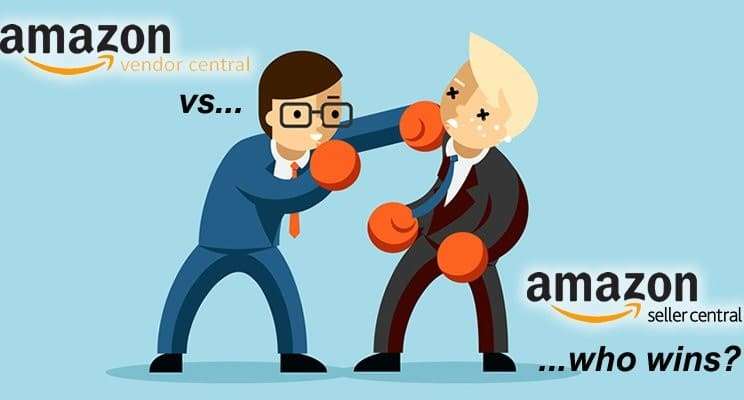If you aren’t already a manufacturer AND a seller, you need to be
I just returned from ChannelAdvisor’s Catalyst Conference in Nashville, TN, attended by hundreds of third-party sellers on all major marketplaces: Amazon, eBay, Walmart, Sears, Alibaba, etc. The speaker roster was impressive: VP of North America for Alibaba, Lee McCabe; Walmart’s VP of Partner Programs, Michael Trembley, and eBay’s VP of Seller Experience, Bob Kupbens. (Apparently, Amazon typically sends a senior leader for Marketplace, but did not this year.) Even Martha Stewart was there talking about her experience with launching exclusive brands online at Macy’s.
The attendees were equally impressive – about 800 large and small third-party sellers across every major category at Amazon and other marketplaces, some who even sold as booksellers on Amazon’s original web site in 1998.
Sellers also seem to understand that Amazon’s long game is all about sellers – likely at the expense of retail vendors. Here’s what brands need to know.
What is a third-party (3P) seller?
A third-party seller is retailer that sells product on Amazon’s (and other retailers’) platforms. “Ships and sold by SavvyMerchant.” Also called a reseller, 3P seller, MFN, or 3Ps, these retailers can choose to ship the product themselves from their warehouses, or enlist their products in Amazon’s FBA (Fulfilled by Amazon) program, where Amazon stores and ships the product for a fee.
A little third-party seller history
Amazon and eBay have always had a third-party platform, but in the past few years, other retailers (Sears, Walmart, and the unbelievable trajectory of Alibaba – but that’s another, rather terrifying, article) have been rushing to build third party businesses. Third party, by nature of the referral fee structure, is profitable for retailers, in a time when e-tailers have reached a size where inventorying and shipping products like dog food is deeply hurting their margins. Also, e-tailers are learning that Amazon’s virtuous cycle of growth is true: Selection drives traffic. Traffic drives sales. And adding massive assortment to your web site (through third-party sellers) is one of the fastest (profitable) ways to grow your business.
You can read more about third-party sellers, and my previous appeal to retail brands to hurry up and set up your seller accounts already, in my previous article. (Really guys. I’m not kidding. Set up your seller accounts now.)
During the conference, I sat down and spoke individually with over 30 sellers who sell on Amazon and other major retailer platforms. Sellers are no strangers to e-commerce. Back in the early 2000s, sellers were among the first retailers to move to online, setting up their own storefronts and then quickly replicating their assortment on Amazon, eBay, and whatever web sites that were beginning to garner traffic. One seller said that over the years, they had rolled out their seller assortment to over 90 retailer web sites, not sure who the winners would be (now that’s a diversified strategy), and had over time rolled back 80 of them, leaving 10 winners. (Sofware was critical here…)
Sellers drive selection, growth, sales, and PURE PROFIT for e-tailers
In my 10 years at Amazon, I worked with hundreds of thousands of sellers, launching and managing over 15 product categories across the US and Canada web sites. I recruited sellers first, to launch every single category, as it was the quickest and most profitable way to build robust, meaningful, and diverse assortment for our customers. Sellers were the building blocks of success at Amazon during each new category launch.
In later years, after we had convinced most of these brands to sell directly to us at Amazon, stealing away most of the sellers’ businesses, these sellers were still there, providing critical, top selling assortment, long tail selection, inventory when our forecasting system sometimes sucked, and most importantly to me, during my time as a Category Leader, an enormous profit center for every category I led.
Amazon and other e-tailers profit on every, single seller transaction by nature of the seller referral fee. If you were Amazon, who would you try to grow faster: Sellers or retail vendors?
Retail vendors take a lot of work for companies like Amazon to manage. They must be negotiated with, priced, inventoried. They are costly in inventory and people resources. And at the end of the day, for many of my clients in the CPG (consumer packaged goods) space, Amazon still loses money on the transaction. My CPG clients hands are often tied, Amazon having blocked them from marketing unprofitable or low-profit products; requiring enormous fees for SVS (strategic vendor services) contacts, and implementing a frustrating amount of automated communication.
Alibaba’s third-party-only strategy is driving staggering growth and volume, and Amazon is investing in their third-party platform to compete
If I were Amazon, I’d be terrified of Alibaba and their US entry. Alibaba already dwarfs Amazon in worldwide transactions, and the volume of their “Singles Day” alone makes Prime Day look comical. Amazon’s retail inventory-first model just doesn’t scale as fast as Alibaba’s enormous third-party marketplace. In addition, third-party is a guaranteed profit center – for all retailers.
Amazon’s “retail inventory” model just doesn’t scale as fast as Alibaba’s enormous third-party marketplace. With Amazon’s extensive fulfillment center network as a competitive advantage, wouldn’t the winning competitive strategy be to license all the space to Fulfilled-by-Amazon sellers (for a tidy profit)?
In the last couple of years, Amazon has ramped up their investment in the seller space, supporting my theory that they are making this a primary area of focus. Programs that were “retail-only” are now open to sellers, too. FBA sellers can participate in Subscribe & Save, upload enhanced detail page content (A+ pages), and bid on sponsored products. They generally have more robust self-service support and automation in Seller Central – even their keyword bidding program is superior to their platform for retail vendors. At the conference, I spoke to many sellers who were participating in new Amazon pilots, such as Merchant-fulfilled Prime (Prime out of your own warehouse), and pay-to-play “account managers” – like Amazon’s SVS program.
Amazon is also getting smarter about which sellers they allow on the platform, at what prices, and selling what brands – to protect the customer experience, and their core values – price, selection, convenience – as they grow this platform.
In addition, retail vendors are getting the financial squeeze on all fronts – more pay-to-play marketing, CRaP suppression and de-listings in various forms (everything from Prime-only offers to relegating items to the Add-On program), and richer terms (for Amazon). Fast forward a few years, and retail vendors may be an elite few – brands that are highly profitable for Amazon by paying a significant amount to maintain a retail relationship.
Several sellers had been approached by Amazon to dabble in 1P (retail vendor relationship), and they wanted to know what I thought. What were the benefits? Given Amazon’s investments in the 3P space over the past couple of years, I was hard-pressed to find great benefits from them that they could not already find as an FBA seller. Maybe more volume? Better access to lightning deals? The list is getting smaller and smaller.
If sellers are Amazon’s focus, what can retail brands learn from them?
Sellers have rolled with the punches. They have adapted. Some didn’t last over the years, but many of them, a large and growing community, are still standing, independently, proudly, and profitably, online. With no need to negotiate with Amazon – ever.
Sellers sometimes get a bad rap, and even pity from brands and customers, due to everything from pricing to sometimes messy content or tail selection. Let me say, these guys don’t want your pity, and they don’t need it. This is a remarkable, agile group of business people, and these key principles can teach everyone (especially retail brands) a thing or two about how to manage a business on Amazon.
1. Sellers have incredible negotiating power by nature of their “3P first” sequencing
When you start out on Amazon (or another e-tailer) as a third-party seller, the world is your oyster.
This is key. When you start out on Amazon as a third-party seller, the world is your oyster. You can see how items perform, and put the winners in FBA. You can dabble in retail, where you feel like driving incremental volume. But if the negotiating gets tough, you have a BATNA (best alternative to a negotiated agreement) – you can walk right back to your seller account and continue, business as usual. Sorry you think it’s CRaP, Amazon – I’ll just sell it myself! (If you don’t know what CRaP is, see my CRaP article.)
As a 1P, retail vendor, you are at the mercy of Amazon’s purchasing and pricing decisions. You must negotiate with them. They will put enormous pressure on your margins, and might try to sell you things you don’t need. If you are unfortunate enough to have non-MAP products that are frequently price-matched to the Walmarts of the world, they’ll decide your items are CRaP, prevent you from marketing them, and ultimately stop ordering them.
It’s becoming harder every month to transition to a seller account (even FBA). It’s probably a tough transition internally at Amazon – if you were a buyer, would you want to lose your retail business to third party? They’re worried you won’t price competitively (maybe you won’t). But it can be done.
2. Sellers creatively adapt their assortment to Amazon’s environment, “designing for online”
Arbitrage sellers. Liquidators. Distributors-turned retailers. Sellers who surgically buy items that Amazon has trouble keeping in stock. A seller who does an enormous business in Halloween costumes – because they know Amazon’s scared of them. A guy who has creds in the music industry and so for that reason, all hi-fi brands trust him with their product (but they won’t sell to Amazon directly) – so he monetizes it by running a very profitable, third-party business.
Point being, sellers have had to roll with the punches and stay abreast of all of Amazon’s evolutions over the past years, such as Amazon stealing their top selling items/brands, kicking them on and off the platform for (sometimes) minor infractions (one guy described sending his warehouse associates home for the day), brand gating ( effectively leaving the seller with inventory and no ability to sell it), and Amazon’s recent launch of the Amazon Brand Registry. This adaptiveness requires immense creativity and scrappiness.
Sellers have to roll with the punches, and this adaptiveness requires immense creativity and scrappiness.
Brands can learn from this by developing a culture of innovation – designing products for online, thinking creatively about their sales mix, and finding ways to speed up product development and content creation.
3. Item-level economics are a seller’s Bible
Resellers are not interested in losing money on items they sell. They are retailers, so they get why that’s a bad idea. One seller told me that you have to treat every SKU as its own little business. If the items don’t make money, sellers often stop carrying them and try to replace the lost revenue by driving traffic to other products in their assortment, in the same way Amazon.com does with their retail items. Or, they get creative – going back to my first point – by multi-packing or bundling.
Most retail brands I consult with either do not fully understand, or (worse) do not concern themselves with Amazon’s item-level profitability – which is a big mistake. If you don’t know why, see “Why Your Brand Should Care About Amazon’s Item Level Economics, or “Oh, CRaP, and Ways to Deal With it.”
4. Sellers are self-service and embrace technology solutions
I know what you’re thinking – how in the world does the Halloween costume seller get his offers up on so many retailer platforms so quickly, then price right to sell through all of them during a super-short season? And all with no help from an Amazon buyer? How can an arbitrage seller possibly make so many buys from so many retailers?
As a retail brand, it’s hard to imagine how a seller could run a 100-million-dollar business on Amazon with zero inside contacts and tons more SKUs…but it can be done, and successfully.
First, successful sellers take the time to really understand the platform. They spend time on their item detail pages, study buybox behavior, and understand what fields and type of content matters most for search, by testing and iterating – and they know that it doesn’t have to be pretty. They familiarize themselves with the nuances of Amazon Marketing Services and keyword bidding. And they make use of the YouTube channels, Amazon Seller forums, and self-help that’s out there for them – because they have to.
These sellers are no more technical than the retail vendors I’ve worked with, but they also embrace software solutions, and some build their own, to help them scale. Two sellers I spoke with have teams of software engineers in other countries that write and support seller-customized repricing software to help sellers find ways to be priced competitively.
Retail vendors I’ve worked with are more hesitant than sellers to introduce technology and automation into their organizations, often resulting in long lead times to update product detail page content, add additional product images, open up a new retailer channel, or create a product bundle.
Most brands I’ve worked with could benefit from taking more matters into their own hands, beefing up on their self-service skills, and introducing some software and/or automation into their business practices.
It’s true that many of these sellers are likely much smaller organizations than big Consumer Packaged Goods companies, and size can slow us all down. Yet, most brands I’ve worked with could benefit from taking more matters into their own hands, beefing up on their self-service skills, and introducing some software and/or automation into their business practices.
In closing
So there you have it. Now brands, please go open your seller account!





